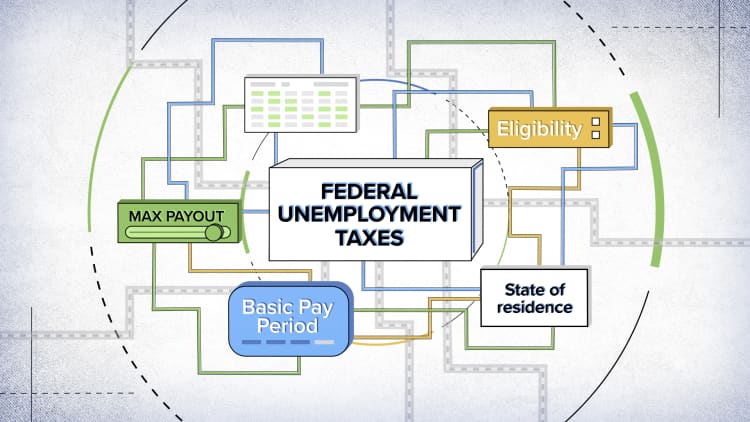Nearly 3 million Americans appear to have fallen off the unemployment benefits cliff after Christmas, a scenario many had feared amid delays in pushing through another Covid relief bill.
Jobless benefits offered through two temporary CARES Act programs were set to lapse the last weekend in December — a "cliff" that would immediately deny income support to millions of workers absent federal intervention.
Congress scrambled to pass a pandemic aid measure, after months of failed negotiations, to prevent that outcome.
Legislators passed a $900 billion package on Dec. 21. The bill extended benefits for the long-term unemployed into March. Former president Donald Trump delayed signing the bill until almost a week later, on Dec. 27, after the deadline had passed to avert a cliff.
'Totally egregious'
U.S. Labor Department data issued Thursday provides the first glimpse of how delays from Congress and the president affected benefits.
More than 1.7 million people dropped off Pandemic Unemployment Assistance, a program paying benefits to self-employed, gig, part-time and other workers, between Dec. 26 and Jan. 2, according to the Labor Department.
Roughly 1.1 million stopped receiving Pandemic Emergency Unemployment Compensation, which offered extra aid to those who ran out of their standard allotment of state benefits.
More from Personal Finance:
Biden rolls out his plan to reopen schools
Biden extends national ban on evictions through March
Biden extends payment pause for student loans until October

Other programs barely picked up the slack. States offer Extended Benefits during times of high unemployment, for example. Only 83,000 people rolled into that program over the same time period. Those benefits were available in just 20 states as of Jan. 2.
"It's a totally egregious way to govern, that we let these programs lapse and then people just fall through the cracks," said Heidi Shierholz, director of policy at the Economic Policy Institute, a left-leaning think tank, and a former chief economist at the Labor Department. "People are living week to week."

Improvements in the labor market likely didn't account for the millions who stopped receiving benefits at the end of December, Shierholz said.
The U.S. economy shed 140,000 jobs last month, the first drop since millions fell off payrolls in April. Roughly 1.2 million people filed a new application for state jobless benefits two weeks ago, a level above the peak of the Great Recession.
The drop of 3 million off unemployment rolls doesn't include Americans who had exhausted their entitlement to aid before the official cliff. More than 2 million had run out of benefits through the PEUC program by the end of November, for example.
Many of these workers are now eligible for additional aid from the $900 billion relief law, including back pay for any missed weeks. However, some states haven't begun issuing that assistance yet, potentially stressing Americans struggling to pay bills now.


